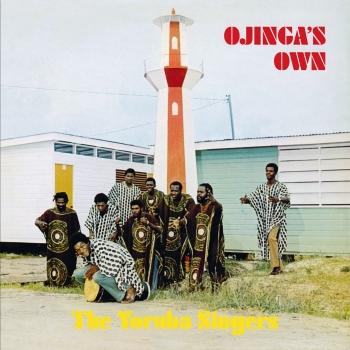Yoruba Singers
Biography Yoruba Singers
Yoruba Singers
Many years ago, the Africans arrived in the Guianas in chains. The Akan people from the region today known as Ghana were the very first, setting shackled feet upon the South American colony in 1621. More would follow over the next two hundred years, plucked from the nations of Western and Central Africa: the Kongo, the Abuna, the Yagba, the Igbo, the Fula, the Effa. Also the Aku, Egba, Ondo and Ijesa, clans who would be collectively referred to as the Yoruba.
In the intervening centuries, the Yoruba have become noteworthy as one of the few African cultures to survive the cultural erasure of chattel slavery and colonialism virtually intact, putting down new roots in the New World. The Yoruba culture, language and religion have traveled from their source in present-day Nigeria and Republic of Benin to become Santeria in Cuba, Puerto Rico and Dominican Republic; Candomble in Brazil, Argentina and Uruguay; Trinidad Orisha in Trinidad and Tobago; and specialized cults for Yoruba gods like Shango in Guyana.
In 1971, a musical collective formed in the Kitty area of Georgetown, Guyana, bearing the name of this proud African tribe. The members dubbed themselves the Yoruba Folk Group, but they would in time come to be known simply as the Yoruba Singers.
“We were given the name by a spiritualist named Bertie Greene,” says Eze Rockcliffe, one of the group’s founders and its longest-serving member. “At the time, we were moving around performing in different places, so he said we traveling like the Yoruba tribe.”
The emergence of the Yoruba Singers came at a time of crucial change in Guyanan society. The colony once known as British Guiana had achieved independence from the United Kingdom in 1966 and became a full republic in 1970. The new Co-operative Republic of Guyana had, however, inherited the British established racial hierarchy that privileged Guyanans of East Indian extraction over those of African descent, and this led to significant social discord in the aftermath of independence. In the mid-sixties, a grassroots organization called the African Society for Racial Equality (ASRE) had campaigned for the partitioning of British Guiana as the solution to the racial strife: one precinct for Africans, one for East Indians, and one for a voluntarily mixed population. When this proposition failed to gain political traction, ASRE co-founder Eusi Kwayana created a new group called ASCRIA—the African Society for Cultural Relations with Independent Africa. The new group dedicated itself to bolstering Afro-Guyanese identity and pride, showcasing the African cultural presence in Guyana, and building a cultural bridge between African descendants in Guyana and black people around the world. ASCRIA immediately took to recruiting black Guyanese youth and enrolling them in their African studies program. One of these youths was named Patrick Rockcliffe, who would take on the name Eze, an Igbo word meaning “king.”











